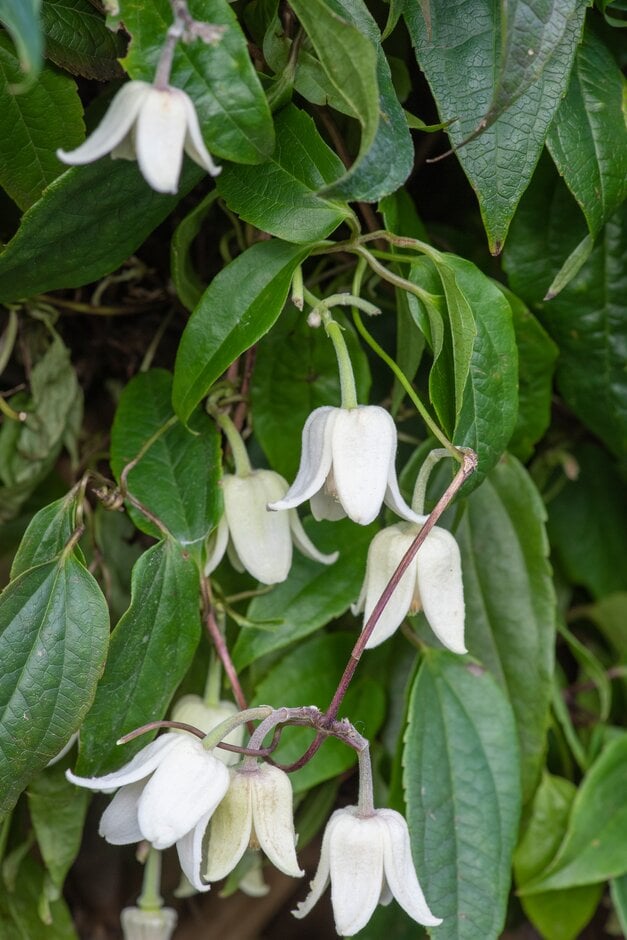Clematis urophylla 'Winter Beauty'
clematis 'Winter Beauty'
An evergreen climber, about 3m tall, with dark green foliage and small, nodding, urn-shaped flowers to 4cm across, with downy, creamy-white petals, surrounding a prominent boss of cream anthers are produced from early to late winter, emerging from pale green buds and become paler, and more flared at their tips as they mature
Synonyms
Clematis clarkeana 'Winter Beauty'Clematis 'Winter Beauty'
see moreClematis clarkeana misapplied
Size
Ultimate height
2.5–4 metresTime to ultimate height
2–5 yearsUltimate spread
1.5–2.5 metresGrowing conditions
Moisture
Well–drainedpH
Acid, Alkaline, NeutralColour & scent
| Stem | Flower | Foliage | Fruit | |
| Spring | Green | |||
|---|---|---|---|---|
| Summer | Green | |||
| Autumn | Green | |||
| Winter | White Cream | Green |
Position
- Full sun
Aspect
South–facing
Exposure
Sheltered Hardiness
H3Botanical details
- Family
- Ranunculaceae
- Native to GB / Ireland
- No
- Foliage
- Evergreen
- Habit
- Climbing
- Potentially harmful
- Skin irritant. Wear gloves and other protective equipment when handling. Pets (rabbits): Harmful if eaten. For further information and contact numbers regarding pets, see the HTA guide to potentially harmful plants
- Genus
Clematis can be deciduous or evergreen shrubs or herbaceous perennials, mostly climbing by twining leaf-stalks, and often with showy flowers. Some have attractive fluffy seedheads in autumn
- Name status
Accepted
How to grow
Cultivation
Prefers well-drained gritty soil in full sun with shelter. Plant with the crown 5-8cm deep to encourage shoots to grow from below ground level. Will benefit from a dry winter mulch. Can be grown in a container in a cold greenhouse or conservatory. See clematis cultivation
Propagation
Propagate by layering or semi-hardwood cuttings
Suggested planting locations and garden types
- City and courtyard gardens
- Coastal
- Cottage and informal garden
- Patio and container plants
- Sub-tropical
- Conservatory and greenhouse
- Wall side borders
Pruning
Pests
May be susceptible to aphids, snails and caterpillars; petals may be eaten by earwigs
Diseases
May be susceptible to honey fungus (rarely), clematis wilt and clematis slime flux
Love gardening
Sign up to receive regular gardening tips, inspiration, offers and more
View our Privacy Policy
Get involved
The Royal Horticultural Society is the UK’s leading gardening charity. We aim to enrich everyone’s life through plants, and make the UK a greener and more beautiful place.
